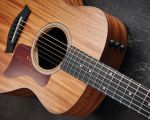Choosing the Right Woodwind Instrument for Band Students
When I first started playing in my school band, choosing the right instrument was both an exciting and daunting decision. As a beginner, I had little idea of what each instrument entailed, let alone what would suit me best. But over the years, I’ve learned that woodwind instruments offer a beautiful array of options, each with its unique sound and style. For any band student considering which woodwind instrument to play, it’s crucial to understand the different options available, the challenges they present, and the joys they can bring to your musical journey. Let me take you through some of the top woodwind instruments that are ideal for band students, whether you’re just starting or already honing your skills.
The Flute – A Light and Airy Start
The flute is often one of the first woodwind instruments that students consider. When I first picked up the flute, I didn’t realize just how much it would come to define my experience in the school band. The flute is one of the most versatile woodwind instruments, and its light, bright sound makes it a popular choice for beginners. It’s played by blowing air across a hole in the headjoint, and it doesn’t require reeds, unlike many other woodwinds, which makes it easier to manage as a beginner.
Why Flute is Great for Beginners
For band students just starting out, the flute is often recommended because it’s relatively easy to produce a sound compared to other woodwinds. The fingerings are straightforward, and the instrument itself is light, making it easier for young students to handle. Additionally, the flute offers a wide range of music, from classical to contemporary, and has a solid place in both concert and marching bands.
The Challenges of Playing the Flute
While the flute is a wonderful option for beginners, it can present some challenges as you progress. Developing control over tone quality, especially in the higher registers, requires diligent practice. But don’t let this intimidate you—many band students find the learning process incredibly rewarding as their tone and musicality improve over time.
The Clarinet – Rich Tone and Flexibility
The clarinet is another excellent woodwind option for band students. I still remember when I first saw a clarinet in action; the sound it produced was so rich and full. Played with a single reed, the clarinet has a smooth, mellow tone that blends beautifully with other instruments in a band. Its versatility allows it to shine in a variety of musical genres, from jazz to classical music, making it a favorite among many band students.
Why Clarinet is a Top Choice for Band Students
One of the best things about the clarinet is its ease of transition between different genres of music. Whether you’re playing a soft, slow ballad or a fast, energetic march, the clarinet can adapt. The fingerings on the clarinet may seem complex at first, but once you get the hang of it, it becomes intuitive. Additionally, the clarinet has a wide pitch range, offering students a greater degree of expression in their playing.
The Challenges of Playing the Clarinet
For beginners, the clarinet can be a little tricky to get the reed working properly. The reed is sensitive, and it takes some practice to find the right pressure and embouchure (mouth position) to create a consistent sound. As you progress, mastering the subtleties of tone and vibrato adds complexity, but the clarinet is an incredibly rewarding instrument to play in a school band setting.
The Saxophone – A Bold, Smooth Sound
Next on the list is the saxophone, an instrument that has always intrigued me due to its bold, jazzy sound. The saxophone is another popular choice for band students, and for good reason. It combines the breathiness of a woodwind with the power of a brass instrument. Played with a single reed like the clarinet, the saxophone produces a wide range of tones, from smooth and mellow to bright and energetic.
Why Saxophone is Perfect for Aspiring Musicians
For beginners who are looking to stand out, the saxophone is a fantastic choice. It offers a more expressive and somewhat “cool” sound, especially in jazz and contemporary music. The instrument itself is larger than the flute or clarinet, which may present a challenge for younger students, but the saxophone is relatively easy to learn compared to more complex instruments like the oboe or bassoon. Its size and weight may require some time to get used to, but once you find your comfort zone, playing the saxophone becomes a joyous experience.
The Challenges of Playing the Saxophone
Though the saxophone is easier to start learning compared to some other instruments, it does require a certain level of strength and control over your breath. Additionally, as you progress, controlling the timbre (tone quality) and mastering different playing techniques can be challenging. However, with practice, the saxophone’s unique sound is sure to be a major highlight in any band.
The Oboe and Bassoon – More Advanced Woodwinds
The oboe and bassoon are not typically instruments that most beginning band students choose, but they’re worth mentioning for students who are looking for more advanced woodwind options. These instruments are both double-reed instruments, which means they require more finesse and control than the single-reed instruments like the clarinet or saxophone.
The Oboe
The oboe has a distinct, piercing sound that stands out in any ensemble. I remember hearing the oboe for the first time in a concert band performance—it was so unique. While it can be difficult to learn initially due to its double reed and intricate fingerings, it offers incredible potential for expressive, emotional performances. Because of its rarity and specific sound, the oboe is often a specialized instrument for students who have a passion for advanced music.
The Bassoon
Similarly, the bassoon is another unique double-reed instrument that offers a deep, resonant tone. It’s not typically seen in beginner bands, but as students grow and develop their musical abilities, the bassoon can be a great choice for those seeking to stand out with a rich, soulful sound. The bassoon is often seen in orchestras and advanced concert bands, but it can be a challenge to master.
How to Choose the Right Woodwind for You
Choosing the right woodwind instrument depends on your musical goals, physical comfort, and personal preferences. As a band student, consider the type of music you’re most excited to play. If you love the bright, cheerful sound of classical music, the flute might be your best bet. If you’re drawn to jazz or pop music, the saxophone could be a perfect fit. If you enjoy rich tones and versatility, the clarinet might be the way to go.
It's also important to consider the physical aspects of the instrument. Some woodwinds, like the flute, require different embouchure techniques, while others, like the saxophone, may require more physical strength to manage the instrument’s size and weight. I recommend trying out different instruments at your school or local music store to see which one feels the best for you. No matter which woodwind instrument you choose, the most important part is to enjoy the learning process and make music that you love.








